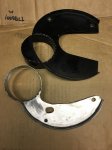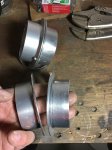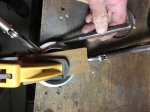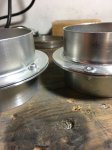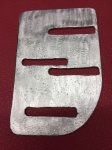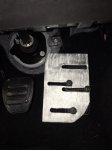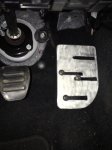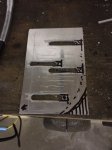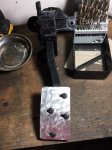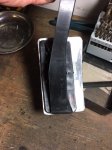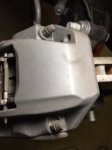- Thread starter
- #141
This is what I’m using for my backer plates...top piece is a backer plate I previously used on my ‘07 BMW Z4. Bottom piece is the same, after a bit of surgery. I was able to attach it using the two bottom bolts that were intended for attaching the dust shield. I did however have to make a new hole in the bimmer plate. I tried uploading a picture of it installed and connected to the orange duct/hose, but kept getting error messages that the file was too large.
